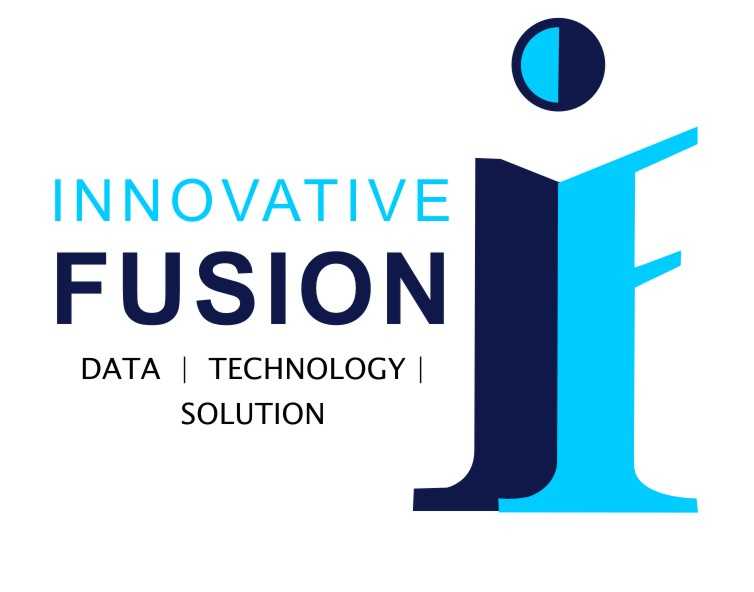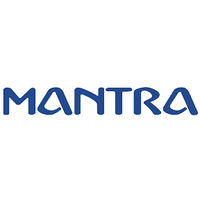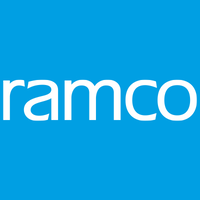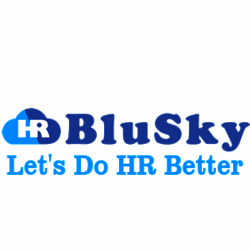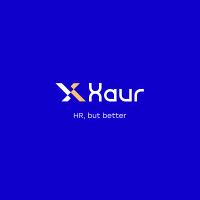What Is Face Recognition Attendance System?
The state-of-the-art Face Recognition Attendance System uses facial recognition technology to effectively and precisely record employees' attendance. It is a practical and safe choice for companies of all sizes since it does away with the need for conventional techniques like time clocks or manual attendance sheets. Fundamentally, the Face Recognition Attendance System scans the faces of staff members and compares them with their distinct biometric information kept in a safe database.
This procedure reduces the possibility of human error and provides real-time attendance updates in a matter of seconds. The great degree of accuracy of this technique is one of its main advantages. Even in poor light or with different facial expressions, it can quickly recognize people thanks to sophisticated algorithms and artificial intelligence technologies. Additionally, it closes the frequent gaps caused by time theft and buddy punching, guaranteeing accurate and equitable attendance records.
The Face Recognition Attendance System has many advantages that make it a worthwhile investment for companies in addition to accuracy. These include the capacity to remotely monitor and control employee attendance, integrate with payroll systems, and provide customisable reporting capabilities. This technology also requires little training and is easy to operate.
For enhanced protection, it works flawlessly with employee ID cards or PINs and is simple to connect with the current infrastructure. All things considered, the Face Recognition Attendance System is a complete solution that transforms how companies handle employee attendance. It is a wise option for any company trying to optimize its attendance tracking procedure because of its sophisticated technology, variety of features, and ease of use.
What Are The Recent Trends In Face Recognition Attendance System?
Because facial recognition technology offers so many advantages, such as increased accuracy, convenience, and time efficiency, its application in attendance systems has been expanding quickly in recent years. Face recognition attendance systems have advanced significantly as a result of the rapidly changing technology. We will go over the latest developments in face recognition attendance systems in our buyer's guide so that consumers are informed before making a purchase.
1. Integration With Cloud-Based Systems: This is one of the prominent developments in facial recognition attendance systems. Because of this, attendance data can now be monitored in real time, which makes it simpler for companies to monitor and control employee attendance. Additionally, it facilitates remote access, which is useful for distant workers or businesses with different locations.
2. Machine Learning (ML) And Artificial Intelligence (AI): The accuracy and dependability of facial recognition attendance systems have been greatly increased by the integration of ML and AI. Employee face traits are continuously learned and adjusted by AI algorithms, increasing system accuracy and lowering the possibility of mistakes or incorrect readings. It is anticipated that this trend will continue as AI technology develops.
3. Multi-Factor Authentication: Many facial recognition attendance systems now provide multi-factor authentication for extra security in response to growing worries about data security. To guarantee that only authorized personnel can access the attendance system, this involves the use of extra verification techniques like a special PIN or biometric verification.
4. Touchless And Contactless Systems: The development of touchless and contactless facial recognition attendance systems has been promoted by the continuing COVID-19 pandemic. These systems promote a safer and more hygienic work environment for employees by using facial recognition to record attendance without physical touch and advanced infrared technology to measure body temperature.
5. Mobile And Web-Based Applications: The availability of mobile and web-based applications is another new development in facial recognition attendance systems. This enables smooth integration with current mobile devices and gives staff members the freedom to record their attendance while on the road.
Benefits Of Using Face Recognition Attendance System
Businesses and organizations searching for a safe and effective method to monitor employee attendance might benefit greatly from a face recognition attendance system.
The following are some main benefits that make it a wise investment for your business:
1. Accurate And Reliable Time Tracking: A facial recognition system employs sophisticated algorithms and software to precisely record employee check-ins and check-outs, in contrast to conventional attendance techniques like paper logs or time clocks. This provides accurate and dependable time monitoring data by removing the chance of human error or tampering.
2. Faster And More Convenient: Employees may clock in and out fast by only stepping in front of the camera when using a face recognition attendance system. This enables a more streamlined and effective attendance process by lowering the time and effort needed for conventional techniques like manual timekeeping or keycard use.
3. Improves Security: Because face recognition technology uses distinctive facial traits to identify employees, it provides a high level of security. This stops illegal access to the workplace and removes the possibility of buddy punching, in which a worker clocks in or out on behalf of a coworker.
4. Cost-Effective: The expenses related to manual attendance tracking, including paper logs, time cards, and administrative labor, can be significantly decreased by purchasing a face recognition system. Additionally, it reduces the possibility of overpaying or underpaying employees, which saves the business money.
5. Real-Time Analytics: Organizations can simply monitor tardiness and absenteeism thanks to face recognition attendance systems, which offer real-time data on employee attendance. This aids in locating any underlying problems and implementing prompt fixes.
6. Intuitive And User-Friendly: The majority of facial recognition systems have user-friendly interfaces and require little employee training. Because of this, companies may use it with ease and save time and effort on training. In conclusion, there are several advantages to a face recognition attendance system, including accuracy, cost-effectiveness, convenience, security, and real-time analytics. Purchasing this technology can significantly enhance the attendance management procedure used by your business, resulting in higher output and efficiency.
Important Factors To Consider While Purchasing Face Recognition Attendance System?
To make sure that you select the best face recognition attendance system for your requirements, there are a few crucial considerations to make. Here are some important things to think about:
1. Accuracy And Reliability: A face recognition attendance system's accuracy and dependability are its most crucial components. After all, precisely tracking and recording employee attendance is the system's main goal. Seek out systems with a low number of false positives or negatives and a high accuracy rate.
2. Speed And Efficiency: The system's speed and efficiency are just as important as its accuracy. During times of high attendance, a quick procedure can save time and ease traffic. Choose a system that can process information efficiently and respond quickly.
3. Security Features: Security is a major consideration for any system that handles sensitive data. To guarantee that the private information of your employees is protected, look for solutions that provide cutting-edge encryption and data protection features.
4. Scalability: Before making a purchase, take the system's scalability into account. Make sure the system can accommodate more users without sacrificing speed if your company is anticipated to expand in the future.
5. Compatibility With Current Systems: It is crucial to determine whether the face recognition attendance system is compatible with your current attendance management system. When integrating the new system with your current procedures, this will save you time and effort.
6. User-Friendly Interface: The adoption and seamless functioning of the system can be greatly impacted by an interface that is easy to use. Seek for systems that are simple to use and intuitive for both managers and staff.
7. Support And Maintenance: Problems can still occur even with the most cutting-edge technology. To guarantee that your system is continually operational, it is essential to select a provider that provides dependable support and maintenance services.
8. Cost: Finally, take into account the system's price. Although it could be tempting to choose the least expensive option, remember that spending money on a dependable and high-quality system will save you money over time by removing the need for frequent replacements or repairs. By taking these things into account, you can make an informed choice and select a face recognition attendance system that fits the particular demands and specifications of your company.
What Are The Key Features To Look For In Face Recognition Attendance System?
To make sure a face recognition attendance system is the right choice for your company, there are a few essential factors to consider. The following are the most important factors to consider while considering a purchase:
1. Accuracy And Speed: Face recognition is just as important as any other attendance tracking system in terms of accuracy and speed. Choose a system that can swiftly collect and process data and has a high accuracy rate.
2. Scalability: Your team will expand along with your company. As a result, choosing a system that can support future growth is crucial. Choose one that can accommodate a lot of users and allows for the addition of new users without affecting functionality.
3. User-Friendly Interface: By ensuring that staff members can utilize the system with ease, a user-friendly interface lowers the possibility of mistakes and misunderstandings. To avoid any difficulties with implementation or training, look for a system with an easy-to-use interface.
4. Integration Capabilities: The Face Recognition Attendance System's ability to interface with your current payroll or HR system must be taken into account. This lowers the possibility of data entering errors and guarantees a smooth data flow.
5. Data Security: One of the main concerns with any attendance system is data security. To keep your data safe and secure, look for a system that includes sophisticated security features like data encryption, multi-factor authentication, and frequent backups.
6. Flexibility: A face recognition system should be able to meet the specific attendance requirements of each organization. Choose a system that can accommodate several shifts, bespoke regulations, and different attendance policies.
7. Reporting And Analytics: Any company must have the capacity to produce comprehensive reports and examine attendance information. Seek a system that enables you to make data-driven decisions by providing strong reporting and analytical capabilities.
8. Customer Support: The effectiveness of your Face Recognition Attendance System can be greatly impacted by a dependable customer support staff. To guarantee a seamless experience, look for a service that provides regular upgrades, maintenance, and round-the-clock assistance.
Why Do Businesses Need Face Recognition Attendance System?
Monitoring employee attendance is essential for sustaining productivity and guaranteeing just compensation in the fast-paced business world of today. Conventional techniques for recording attendance, including manual time clocks or cards, can be laborious and prone to mistakes. Face recognition attendance systems are useful in this situation. To precisely and effectively record employee attendance, a face recognition attendance system makes use of cutting-edge technology, such as facial recognition algorithms.
Due to its many commercial advantages, this technology is a necessary investment for contemporary companies. First of all, a face recognition attendance system saves time and lowers the possibility of human error by doing away with the necessity for manual data entry. Nowadays, it's a hygienic choice because employees only need to scan their faces to register their attendance, doing away with the requirement for cards or physical interaction.
Furthermore, a face recognition system removes the potential for buddy punching, in which staff members clock in on behalf of their peers, in contrast to conventional attendance techniques. This guarantees accurate and equitable attendance records, which raises employee trust in the workplace and results in fair compensation. Real-time attendance tracking is yet another important benefit of a face recognition attendance system.
This enables prompt leave approvals and effective job scheduling by giving managers and HR staff fast access to attendance data. Furthermore, a facial recognition system offers useful information on employee attendance trends and patterns, assisting companies in recognizing and resolving problems like tardiness or frequent absences.
Last but not least, putting in place a face recognition attendance system encourages a culture of accountability and punctuality inside the company by communicating to staff that their attendance is valued.
How Much Time Is Required To Implement Face Recognition Attendance System?
The size of the company, the number of employees, and the system's scope are some of the variables that may affect how long it takes to install a face recognition attendance system. The implementation procedure typically takes a few days to a few weeks to complete. Setting up the required hardware and software is the first stage in putting a face recognition attendance system into place.
Installing cameras and configuring the facial recognition software on a server on-site or in the cloud are included in this. Approximately one to two days may be needed, depending on how complicated the system is. Employees are then enrolled in the system by having their faces photographed and given unique identity codes. The amount of staff can affect how long this process takes.
Enrolling a few hundred employees typically takes two to three days. Integrating the system with your current HR or attendance management software comes next after it has been set up and personnel have been enrolled. Depending on the Face Recognition Attendance System's compatibility and integration capabilities, this could take a few days.
The system must be tested following integration to make sure it is operating precisely and effectively. Depending on the organization's size and the quantity of test runs needed, this process may take a few days to a week.
A face recognition attendance system's implementation procedure can take anything from one to two weeks for small businesses to four to six weeks for larger businesses. To guarantee a successful and seamless integration, constant collaboration with the vendor is essential throughout the implementation phase.
What Is The Level Of Customization Available In Face Recognition Attendance System?
Depending on the manufacturer and model, face recognition attendance systems offer different levels of customisation. Nonetheless, the majority of systems provide a variety of adaptable choices to satisfy the unique requirements of various companies and organizations. The ability to set and modify various attendance rules and regulations is one of the primary customization options available in face recognition attendance systems.
This enables companies to establish precise attendance policies, including mandatory break times, early departure policies, and late arrival criteria. Depending on the particular requirements of the company and its workers, these guidelines might be modified and tailored. Many facial recognition attendance systems provide customizable possibilities for data analysis and reporting in addition to attendance regulations.
This enables companies to monitor and evaluate attendance information in a manner that best suits their unique requirements. For instance, a finance department would be more interested in tracking attendance for budgetary and payroll reasons, but an HR department might want to monitor attendance trends for productivity reasons. Businesses can obtain the most pertinent and practical information from their attendance system by customizing reports and data analysis.
The degree of customization offered by the facial recognition technology itself is another crucial consideration. This includes the ability to modify the matching algorithm, change the system's sensitivity, and add or remove facial recognition templates. These settings enable businesses to adjust the system to identify a particular set of people or to account for variables like variations in lighting or look.
Which Industries Can Benefit The Most From Face Recognition Attendance System?
The face recognition attendance system is a cutting-edge technology that is revolutionizing the way businesses track their employees' attendance. This advanced system is gaining popularity in various industries due to its numerous benefits and efficient functionality. In this buyer's guide, we will discuss which industries can benefit the most from a face recognition attendance system and why.
1. Corporate Businesses: Corporate businesses have a large workforce, which makes tracking attendance a tedious task. With a face recognition attendance system, they can automate the entire process, eliminating the need for manual recording. This saves time and reduces the chances of errors. Moreover, with the ability to track and analyze attendance data, corporate businesses can make informed decisions regarding their workforce, productivity, and scheduling.
2. Educational Institutions: Face recognition attendance system is highly beneficial for educational institutions such as schools, colleges, and universities. It provides accurate attendance data, which is essential for monitoring student attendance and punctuality. Additionally, it helps prevent proxy attendance, ensuring a fair and transparent system. The system can also send alerts to parents in case of their child's absence, keeping them in the loop.
3. Healthcare Industry: In the healthcare industry, time and attendance tracking is critical. Hospitals, clinics, and other healthcare facilities have a large number of staff and employees, making it challenging to track their attendance manually. With a face recognition attendance system, healthcare institutions can accurately record and track their employees' working hours, ensuring smooth shift management. It also helps in managing overtime and payroll accurately.
4. Manufacturing Units: Facial recognition attendance system is highly beneficial for manufacturing units, where there is a high risk of buddy punching and time theft. This advanced system can help prevent such malpractices, ensuring the accuracy of attendance records. It also helps in tracking the working hours of employees, which is crucial for calculating their productivity. Manufacturers can utilize this data to make informed decisions about their workforce and boost overall productivity.
5. Government Institutions: Government institutions such as municipal corporations, public offices, and other agencies can greatly benefit from a face recognition attendance system. It provides a hassle-free and efficient way to manage the attendance of a large number of employees. It also helps in preventing time theft and ensures accurate salary and overtime calculations, saving both time and resources.
Conclusion
In conclusion, any firm may significantly increase the effectiveness and precision of employee attendance tracking by implementing a face recognition system. It delivers real-time data for scheduling and payroll, does away with the need for manual procedures, and lowers the possibility of human error. It's crucial to assess the unique requirements of your company when thinking about a face recognition attendance system and select one that provides the features and functionality you require.
Choose a system with dependable face detection algorithms, user-friendly interfaces, and integration with your present payroll or HR software. Furthermore, since the system would be holding sensitive employee data, it is imperative to assess its security features. To guarantee the security and privacy of the data belonging to your employees, look for solutions that include multi-factor authentication, data encryption, and frequent system updates.
The system's scalability should also be taken into account because your company might expand in the future. Select a system that has various pricing options and can readily handle a greater staff. Finally, make an investment in a respectable, well-established business that provides trustworthy maintenance and customer service. Selecting the correct supplier is essential if you want your face recognition attendance system to be a long-term solution.
In conclusion, your company can gain a lot from a face recognition attendance system, including increased security and efficiency. You may make an informed choice and select a system that best suits the particular requirements of your company by taking into account the previously listed aspects. Remember that a well-chosen system will help your business succeed in addition to saving time and money.




